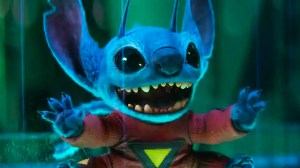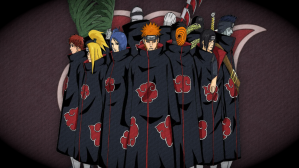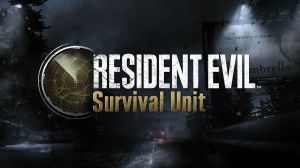Following the release of the brilliant first issue of his new miniseries with Michael Cavallaro, The Life and Times of Savior 28, veteran comics writer J.M. DeMatteis joined us to talk about the series, how it developed and what to expect.So I suppose that the question from which all else springs is, where did this story come from? You told me at the New York Comic Con that it was something you’d been mulling over since your days with Captain America, which means that it would predate things like The Golden Age and Watchmen and, if published back then, might have been truly unique among its peers.Back in those ancient days of the early 1980’s—I think it was ’83—I was finishing up a year-long storyline that culminated in the death of the Red Skull. I began to question where Captain America would go from there. What would this man, who’d been waging war, punching faces, dropping buildings on the bad guys’ heads, for (at that time) forty years, do once his primary opponent, a guy he’d been battling since l940, was gone. Knowing Cap—well, my interpretation of Cap—it seemed logical to me that he would have reached a point where he said, “Enough! I’ve been doing this for four decades and it hasn’t made the world a better place or me a better man. Violence is a dead end and I have to chart a new course.” This would also allow me, as a writer, to deal with my ambivalence about the role of violence in super-hero comics, something I’ve always been extremely uncomfortable with. Don’t get me wrong, I love these characters—they resonate on so many wonderful, mythic levels—but most super-hero stories come down to two guys in costumes beating the crap out of each other. Not exactly the most enlightened point-of-view there is. In fact, it’s a fairly stupid and destructive one.I worked up a proposal for a pretty massive arc that would find Cap becoming a global peace activist. (Which would freak out both the government and his fellow super-heroes.) It all culminated in Cap’s assassination at the hands of Jack Monroe, the Bucky of the 1950’s. Now this was a fairly radical idea for its day—but my editor, the late, great Mark Gruenwald, liked it and was willing to go out on a limb with me. Jim Shooter, on the other hand, was totally against it. (As editor-in-chief of the Marvel Universe, and custodian of those characters, he had every right to feel that way. And, looking back, I can understand why a story that questions every super-hero’s reason for being wouldn’t work within the context of that shared universe.) So the idea went down in flames…and I’ve been playing with it—peeling it apart, putting it back together—ever since. Trying to find just the right vehicle for the idea.On that note, is it a little weird to think that, had things fallen into place a little differently, this might be mentioned in the same breath as Watchmen and The Dark Knight Returns? Or do you kind of let that sort of whimsy pass you by, and just consider yourself lucky that you waited until now to get Cavallaro?I’m a great believer in cosmic timing. In things happening exactly the way they’re supposed to. Who knows? Had I done the story back then, and with a different collaborator, it might not have worked. Taking the idea outside of the Marvel Universe, having the freedom to create my own world and characters, has allowed me to flesh this story out and develop it in ways I never could have back then. Also, I think I’m a much better write now than I was then. Who knows? I might have taken this wonderful concept and totally screwed it up.I really do think stories have their own timing. I’ve had other projects—Abadazad and the Stardust Kid are two that come to mind—that took many years to find their way to the printed page—and it was clear to me that it had to be that way. There have been a few times, over the years, when I had interested artists and thought I had something set up for Savior 28…and it always fell through. I honestly believe that the story was waiting for Cavallaro to come along. At this point, I can’t imagine anyone else bringing my story to life.As for Watchmen and Dark Knight: I really can’t think that way. This book is coming out exactly when it’s supposed to.Is there a little of the hero-worship-condemnation that we saw in Kingdom Come going on here? The sidekick’s name is actually the Daring Disciple!I’m embarrassed to admit that I never read Kingdom Come. (I’m sorry, Mark!) But Dennis McNulty—Savior 28’s former sidekick—absolutely worships 28. And hates him. And everything in between. Ambivalent is too small a word to describe the Disciple’s feelings about S-28.Between your freelance work for Boom! and DC, and your editorial work at Ardden Entertainment, plus your non-comics work, you’ve got to be fairly busy. Why shop this book to IDW instead of keeping it at home, and why now, of all times, to finally bring it to life?It was just one of those happy synchronicities. I’d been talking to Chris Ryall about another project, so the door was open at IDW. At the same time, Mike Cavallaro had shown me some samples of a new web-comic he was working on, Leviathan: one look at those pages and I knew Mike would be perfect for Savior 28. So I dusted off the proposal and sent it off to Mike and he loved it. I then sent it off to Chris, along with Mike’s samples, and IDW approved it the same day! After more than two decades, all the stars aligned…and we were off.One thing that really struck me in terms of characterization is the Disciple’s cursing in the narration. It completely fits the aging veterans I’ve known in my life, while obviously being out-of-character not just for heroes of that time, but for how they’re depicted ages on (look at Justice Society of America, for example, and tell me if you think DC will ever let any of those guys curse).One of the most important parts of writing for me is finding the right narrative voice to tell the story. Is it one of the characters? An omniscient narrator? What’s the tone of the narration? What’s the point-of-view? Do we even need a narrative voice at all or can we tell the story through visuals and dialogue alone? In the case of Savior 28, Dennis McNulty’s voice eventually filtered through the noise. Once I found it, I just locked on and let him talk. There was no conscious decision to make him speak a certain way, to use profanity or not, to hold any particular political or philosophical viewpoints. It’s just McNulty’s voice leading me on. He’s very real to me.I feel like the binge is kind of an elegant, if tragic, answer to the eight-year-old question of “What were the superheroes doing on 9/11?”. Were those just two scenes that had already been written and needed to be married, or how did that materialize?It really just happened as a natural outgrowth of following the story. I was dealing with a story that moves from the 40’s to the present day, that deals with the social and political realities of the times: How could I not deal with one of the greatest tragedies in American history? Especially when my main character is an American icon? But it had to be personal. The larger tragedy of 9/11 is a reflection of several other tragedies in 28’s life…and they all come together to totally demolish him, to topple his world-view, everything he’s fought for, believed in, for the previous sixty years.Once you give up the naivete of black-and-white morality, what’s easier to write? Is it harder to slip back into “forties Savior 28” once you know (and presumably support) where he’ll end up?As we’ll see in the second issue—which takes 28 face-to-face with one of the greatest horrors of World War II—Savior 28 wasn’t quite as innocent as he pretended to be. The world has never been black and white, even when—especially when—we’ve tried to project a black and white morality over it. That said, it’s fun to play with the various eras of super-hero traditions and American history. The truth is, this could have easily been a twelve issue series. There are so many areas of pop culture, politics and history I wanted to explore. I’m constantly writing sequences then cutting them out because there’s just no room for them.This isn’t the first project where your politics have shone through a bit—there were plenty of Bush jokes in Hero Squared—but it’s the first one I’ve read recently where politics have been a major plot point. How do you see the role of the superhero in world politics?Well, that’s one of the primary questions that this series asks…so I’d rather the answer unfolds in the context of the story.Believe it or not, I don’t consider myself that much of a political animal. I think political solutions, on all sides of the spectrum, can take us only so far. I think our ultimate answers have to come from other places. At the same time, the madness we all lived through these past eight years has politicized a lot of people. And that’s another reason why I think the timing of this series is perfect. I had the original idea back in the Age of Reagan and the Evil Empire. The Age of Bush is—for better or worse—a far more interesting time. And, of course, by the end of the series, we’ll have reached the Age of Obama.And when you have a sequence like this, do you often get the same kind of thing that Savior 28 is getting? A kind of “shut up and sing” mentality coming from the fans?We’ll see what the response is. We never heard a negative word about the Bush jokes in Hero Squared—but S-28 is a little more “in your face” when it comes to politics. That said, it’s also a series that’s about going beyond politics. About the need for compassion in our lives. The realization that you can’t make anyone—whether it’s a super-villain or a President or the guy next door—into the Evil Bad Guy. Hard as it can often be—and the darker the times, the harder it is—we’ve got to see past the convenient labels in order to get to the truth of things and find solutions.Where did you get that idea? The “traitor” taunts and all that? Was it always part of the S28 idea or did it develop post-9/11 or something?The idea that people would turn against our hero was there from the start. That said, the post-9/11 period (when many who dared to criticize our government or oppose the Iraq War were branded appeasers, and sometimes traitors…when most anti-war protests were ignored, or substantially downplayed, by the media…when the ludicrous concept of “free speech zones” was popularized) became the perfect background for Savior 28’s journey. The ideas I had in my original proposal were playing out on the news every night.Structurally, it’s interesting; I’ve always preferred stories that cut back and forth like this to those that have a definitive beginning and end so that you can get your bearings a bit. Obviously, S28 does so…but the other comic that’s doing that on the market right now is Young Liars, wherein the reader really has no clue where or when they are half of the time. Is that something you were on the lookout for when you were setting the scenes?It’s funny: when you have an idea literally brewing for decades, you really think you’ve got it down. Then you sit at the computer to write and you realize you have dozens (if not hundreds) of ways you can tell your story. As I began to work on the first issue, this time-jumping, Citizen Kane-like structure began to evolve. And it’s been challenging. I tend to prefer a clearer narrative thrust. But the story demanded that it be told in this way. So each month I sit down with all the events of a particular issue worked out…and then start cutting them apart and putting them back together again like a jigsaw puzzle. We start in 2002, go back to 1939, jump to 1950, up to 2003. I’ve played more with structure on The Life and Times of Savior 28 than just about any other project I’ve ever done. It’s even a challenge to the narrative voice: McNulty is looking back at events, but from what time? Is it just after the assassination? Five years later?That doesn’t mean later issues won’t be more straightforward: it really depends on the demands of that particular issue.What went into the decision to give him a “Lois?” Was it just the fact that every character back then kind of had that one special lady, or is there more to it than that?Well, yes, most super heroes of that era had his “Lois.” But Samantha Shane is far more than that. Her impact on Savior 28’s life, and on the choices he makes all through the series, is hugely important. Her life, her death, her beliefs, all of these things shape 28. In the third issue, we’ll meet Samantha’s daughter, who also plays a very pivotal role in his life.How peeved were you when, during the writing of this probably, Bucky came back and Captain America got capped in a fairly similar fashion to what we see in the first issue?I wasn’t peeved at all. In fact it was a weird kind of vindication: “See? I wanted to do this in l983!” That said, I haven’t actually read any of those Captain America issues and I’m glad I didn’t, because I wouldn’t want any of that to, however unconsciously, bleed into Savior 28.Now, to clarify: Being “timeless” is Savior 28’s only “real” power, or are there others? Clearly not invulnerability.Actually, he is invulnerable. We make it clear, in the second issue, that 28 started out as a sort of 1930’s Superman—powerful, but with clear limits—and evolved into a guy who could get hit with an atomic bomb and survive (albeit painfully). So the question is: How do you shoot, and kill, and guy who can withstand an A-bomb blast? And that’s something that will be answered in the course of the series.What would you say is the general breakdown of the series, in terms of how much superheroics we’re going to see S28 do, versus how much of his later-life crusading will play a role?My original vision was to really spend equal amounts of time in the various eras of Savior 28’s history…and, again, that would have worked if we’d had twelve (or sixteen!) issues to tell the story. Since we don’t, more and more of the focus is on the period of 28’s peace activism. That said, we do get to meet the other heroes and villains in the Savior 28 Universe—we’ve created and designed a pretty large group of them—and let them have their slam-bang fun. All the better to comment on it.I discussed this with Mike…I absolutely loved that splash page with the, err, “origin stories.” There’s not really a question here, except maybe what was the deal with the fez?When I first develop Savior 28, I have a very definitive origin in mind for him; but, as I worked on the first issue, I decided that being more ambiguous, and more playful, with the origin, offering up a series of alternatives, would be far more interesting. In the end it doesn’t matter how 28 came to be, what matters is who he is.As for the fez (which J. Edgar Hoover is seen wearing during the origins sequence): Mike Cavallaro was doing some research and came across a photo of Hoover in a fez. He thought it was so absurd that he had to put it in. At first, I was scratching my head; but the more I looked at it, the more I liked it. The fez may even make a comeback later in the series!Will we get to see a little Superman-like “how the world reacts” to his death in future issues?Absolutely. We get a little of that in the first issue; but the global reaction is very important later on in the story.Lastly, I have to assume that the final-page reveal is not wanton. Is our estimable narrator going to come back to that point fairly soon?All will be revealed…eventually!Before we wrap this up, I want to mention that, along with the brilliant covers that Mike C is doing, we’ve got some amazing alternate covers in the works. First issue’s alternate is by Sal Buscema and Joe Sinnott and we’ve got Kevin Maguire, Mike Ploog, Shawn McManus and Don Perlin in the wings. And they’re all knocking it out of the park.
J.M. DeMatteis on The Life and Times of Savior 28
Following the release of the brilliant first issue of his new miniseries with Michael Cavallaro, […]










